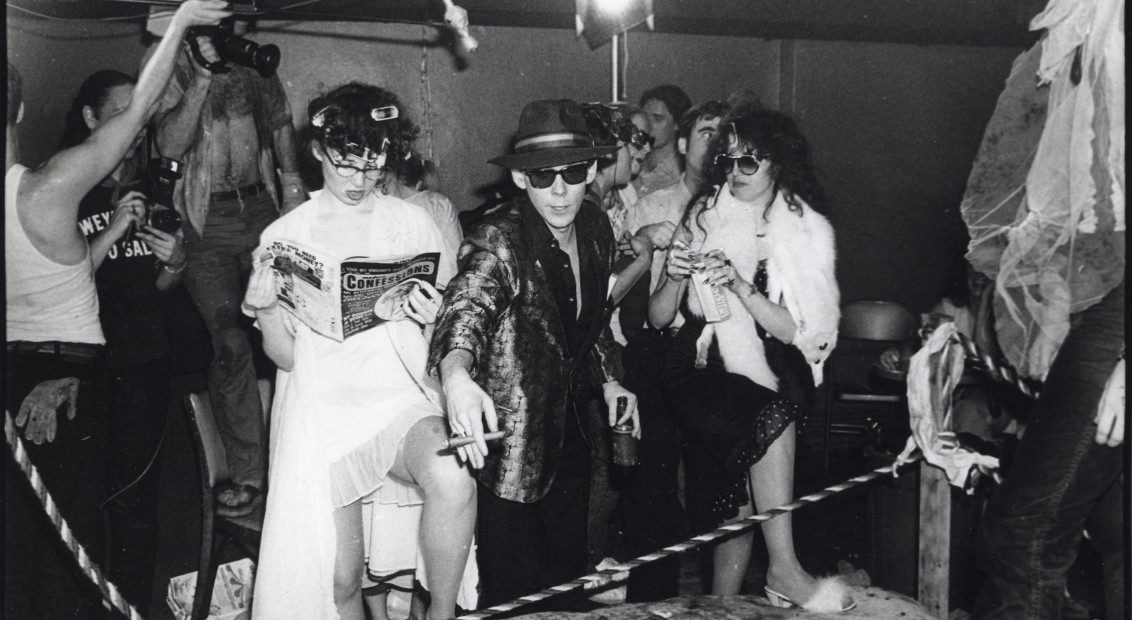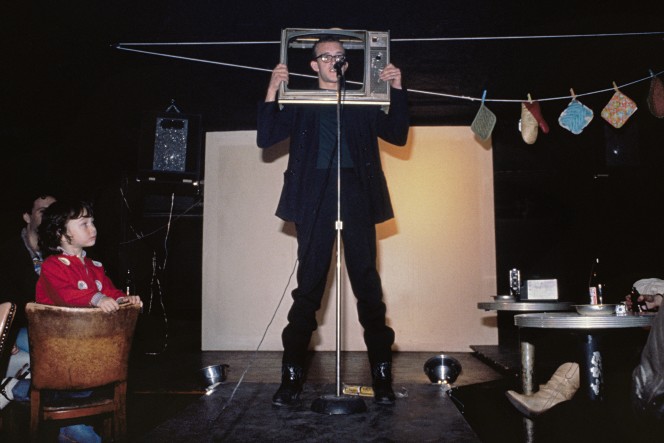Club 57’s “Subterranean Spirit” on St. Mark’s Place
In 1978, a Polish emigré named Stanley Strychacki rented a basement space in a church at 57 St. Marks’ Place. The four-story-with-basement building, originally built as a private dwelling, was occupied by the Holy Cross Polish National Church throughout the mid 20th-century. Strychacki’s goal, along with co-founders Ann Magnusson and Susan Hannaford, was “to create an environment for artists so they could meet, collaborate, and create.”
Club 57 thrived on St. Mark’s Place from 1978-1983. Significantly, it featured and launched the careers of many artists who went on to great prominence, including Madonna, Jean-Michel Basquiat, Keith Haring, Cyndi Lauper, and more. Decades later, the club is still remembered as a legendary underground cultural space promoting art of all genres: from cinema to writing, from graphic design to poetry, and music, performance, dance, and fashion.


The venue was “cramped,” “no-frills,” and “underground.” But despite (or perhaps, because) of these characteristics, it was also “guaranteed fun every night,” writes André-Naquian Wheeler. Club 57’s programming was dynamic and extensive: within one week in 1980, the event calendar contained a dance party, a screening of the film Attack of the 50 Foot Woman, a debutante ball, and an art show organized by Keith Haring. Or, as the Village Voice put it: “almost every night, the club was host to… mutant forms of culture-shocking.”
In an oral history published in i-d, Sophie Cavouluacos, who curated a show at MoMa to commemorate the Club’s legacy, recalls that the New York of the time was “post-bankrupt, post-blackout, post-disco, and a new set of young people — especially art students — had congregated around the East Village.”

Artist Frank Halliday, who created sets for some of the many experimental plays staged at the Club, adds, “It was a really interesting moment in time. All the art and music and writing and everything was done in the club. Because there weren’t that many clubs that had all the artists in it. For us, we would rent the club for $25 a night and charge people one dollar to get in. It was never a money-making thing. That’s what made it such a great thing. Anybody could do anything there.”
Lynn Yaeger, a longtime Villager and cultural critic, recalls the delightfully quirky fashions of the Club’s denizens. Before “high-low” fashion was in vogue, Club 57 “wallowed in the unrepentant ‘low,’” sporting pieces like saggy mens’ tweed suits, strapless ballgowns, “black-sheath-and-pearls unearthed for a night out on the town.” The scene, she remembers, was “drenched with style in the fullest sense of the word, the primal desire to decorate your body, to shock and stun and delight with one’s appearance.”

From fall 2017 to spring 2018, the Museum of Modern Art staged a retrospective on Club 57 with the aim of “fully examin[ing] the scene-changing, interdisciplinary life of this seminal downtown New York alternative space.”

Performance, and Art in the East Village, 1978-1983″ courtesy of MoMA.

Despite its staging in a polished, well-funded art institution, this exhibition managed to preserve the scrappy, DIY ethos of Club 57 and its people. A Village Voice critic writes: “the show is more of a portrait of a moment in time than a dutiful, dry historicizing of it. In truth, it’s a bit of an endearing mess, a little like a teenager’s bedroom. The walls are covered almost haphazardly, though expressing total fandom and devotion… apropos to Club 57’s subterranean spirit.”

Recently, Village Preservation was fortunate enough to host a special multimedia lecture and discussion with one of the Club’s co-founders, Susan Hannaford: be sure to watch the video recording here!
Susan currently manages the Club 57 Artist’s Fund, a group dedicated to preserving the memory and mission of the Club. The Artist’s Fund aims to support “the unknown artist with little or no financial resources to pursue, show, and develop [their] work.” The Fund awards yearly grants to the chosen artists, as well as preserving the legacy and archives of the original club. Learn more here.
For those curious about the Club and the East Village building which housed it, be sure to check out the entry for 57 St. Mark’s Place on our interactive research resource, East Village Building Blocks.
